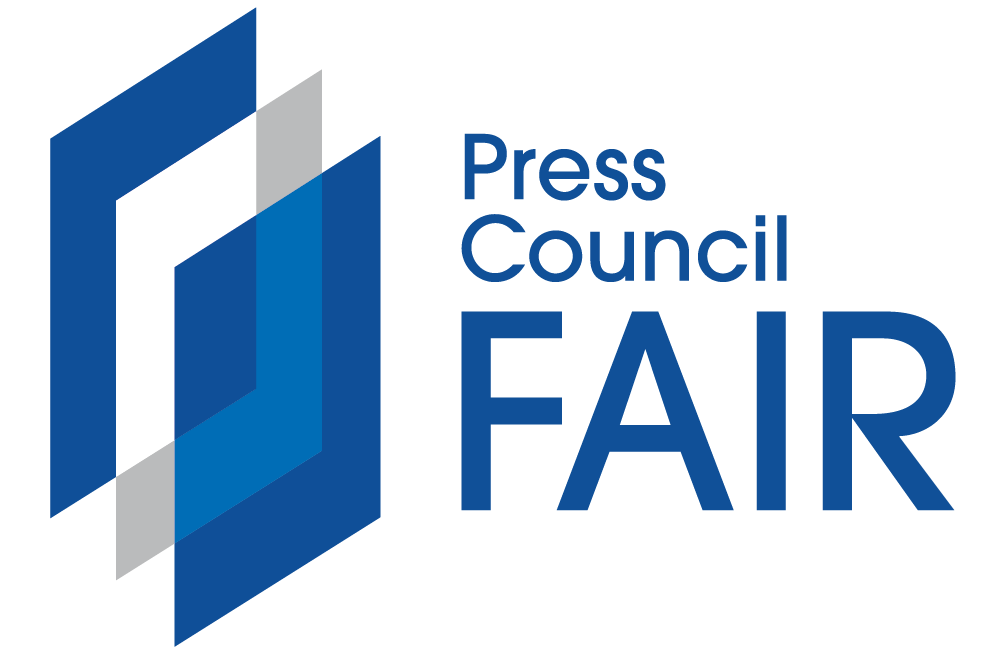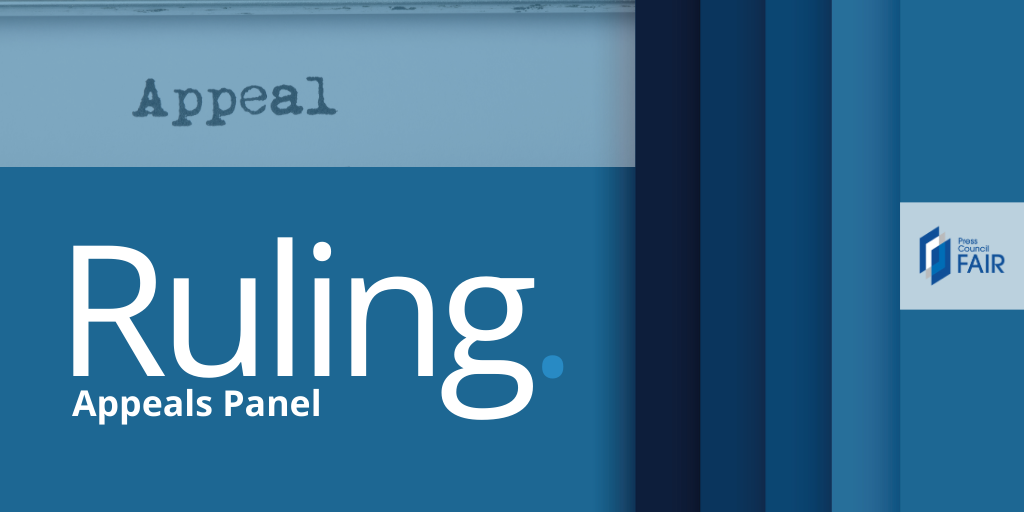Chris Heyns vs. Son op Sondag
SUMMARY
The headline to the story in dispute read, Sekssoekers was bekend – Karwagte onthou dr. Heyns (Sex seekers were well-known – Car guards remember Dr Heyns). This was published on 17 May 2015.
This ruling by Press Ombud Johan Retief was based on the Press Code that was in effect before 30 September 2022.
The story was about a court case following the death of Dr Louis Heyns. The latter had reportedly been murdered in an area where gay people had sex. The journalist wrote that the pathology report stated there were signs of a sex act related to his death.
Chris Heyns, the deceased’s elderly brother, complained that the story incorrectly reported that:
- the pathology report stated there were signs of a sex act at the scene of his brother’s death; and
- his brother had two children (while he had three).
He added that the reportage was malicious and that it had a devastating effect on the deceased’s family and friends.
The newspaper admitted the statement about the pathology report was an inference and accepted that that it could have been wrong.
Son op Sondag was:
- directed to unreservedly apologise to the deceased’s family and friends for stating as fact that the pathology report stated there were signs of a sex act, causing severe trauma to the family and friends; and
- cautioned for incorrectly reporting that the deceased had two children and directed to correct this mistake.
The rest of the complaint was dismissed.
THE RULING ITSELF
This ruling is based on the written submissions of Mr Chris Heyns and those of Edwin Lombard, assistant editor of the Son op Sondag newspaper.
Complaint
Heyns, the elderly brother of Dr Louis Heyns, a murder victim, is complaining about an article on page 3 in Die Son of 17 May 2015, headlined Sekssoekers was bekend – Karwagte onthou dr. Heyns (Sex seekers were well known – Car guards remember Dr Heyns).
He complains the story incorrectly reported that:
· the pathology report stated there were signs of a sex act at the scene of his brother’s death; and
· his brother had two children (while he had three).
Heyns adds that he spoke to both car guards in question, one of whom reportedly told the reporter that he had seen Dr Heyns there before – and says these guards told him they were offered R500 each for information, “and for that money they will say anything you want to hear”.
He concludes that not only was the story inaccurate, it was also malicious – and complains that it had a devastating effect on the deceased’s family and friends.
Heyns also says details in the pathologist’s report were printed without the knowledge of the family, which has caused extreme trauma to them. However, this was published on 21 July 2014, which means that I cannot entertain this part of the complaint (as it is way out of time).
The text
The story, written by Colin Hendricks, was about a court case following the death of Dr. Louis Heyns in May 2013. The latter had reportedly been murdered in an area where gay people had sex. The journalist wrote that the pathology report stated there were signs of a sex act related to the death of Dr Heyns.
Son op Sondag
The newspaper:
· admits the statement about the pathology report was an inference, and accepts that this inference might have been wrong;
· says it reported that Dr Heyns had two children “because during the court case only two children were at all times present” – however, it accepts the complainant’s version in this regard;
· emphatically denies that it has ever paid for stories or information; and
· argues that the complainant’s further interrogation of the car guard is of no consequence to the newspaper, as the story did not mention that information.
My considerations
The crux of the complaint is that the story falsely stated as fact that the pathology report specified there were signs of a sex act at the scene of the murder.
I have studied this report, and I agree with the newspaper that the statement in question is an inference – whereas the story indeed states its assumption as fact (as Heyns correctly points out).
Even though such an inference may have been correct, as the newspaper says, the reportage still simply is unacceptable, given the wide readership of the newspaper – and especially taking into account the severe trauma it unnecessarily has caused the family and friends.
I also accept that the story incorrectly reported that the deceased had two children.
As to the credibility of the car guards, Heyns says in later correspondence that he would not belabour this point “as they are clearly not reliable witnesses” – he would be unable to prove the veracity of their allegations.
So be it, then.
I have no reason to believe that the newspaper has paid the car guards for information, or that it was the reporter’s intention to cause harm (read: malice).
Lastly, I note that the story in question covered the whole of page 3.
Finding
The statement of fact that the:
· pathology report specified there were signs of a sex act at the scene of the murder is in breach of Section 2.1 of the Press Code that reads, “The press shall take care to report news truthfully, accurately and fairly”; and
· deceased had two children is in breach of Section 2.1 that says, “The press shall take care to report news…accurately…”.
The rest of the complaint is dismissed.
Seriousness of breaches
Under the headline Hierarchy of sanctions, Section 8 of our Complaints Procedures distinguishes between minor breaches (Tier 1), serious breaches (Tier 2) and serious misconduct (Tier 3).
The first breach of the Code, as described above, is a Tier 2 offence; the second is a Tier 1 offence.
Sanction
Son op Sondag is:
· directed to unreservedly apologise to the deceased’s family and friends for incorrectly stating as fact that the pathology report stated there were signs of a sex act, unnecessarily causing severe trauma to the family and friends; and
· cautioned for incorrectly reporting that the deceased had two children, and directed to correct this mistake.
The newspaper is directed to publish a kicker on page 1 which should contain the word “apologises” or “apology” and the surname “Heyns” with a reference to page 3.
The apology on page 3 should:
· start with the apology;
· include a summary of the complaint, as well as the full text under the heading “My considerations”;
· end with the words, “Visit www.presscouncil.org.za for the full finding”;
· be presented to me for approval; and
· be published at the top of the page.
The headline should reflect the content of the text. A heading such as “Matter of Fact”, or something similar, is not acceptable. This should also be presented to me prior to publication.
If the story appeared on the newspaper’s website, the apology should also appear there.
Appeal
Our Complaints Procedures lay down that within seven working days of receipt of this decision, either party may apply for leave to appeal to the Chairperson of the SA Press Appeals Panel, Judge Bernard Ngoepe, fully setting out the grounds of appeal. He can be contacted at [email protected].
Johan Retief
Press Ombudsman


